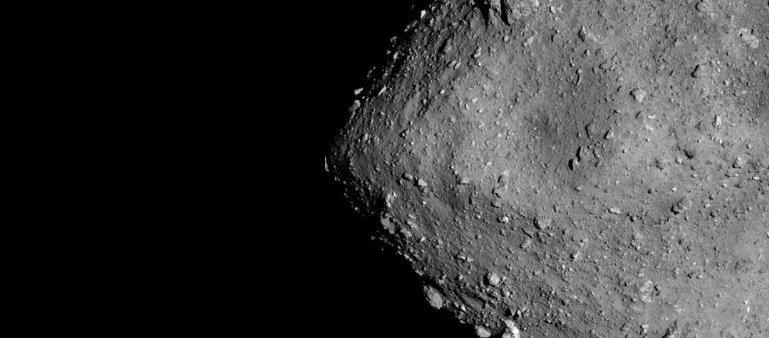Japan releases the first image of a sample of the asteroid Ryugu – wait, is this tin foil?
Summary: Japan released photos of rock samples from the asteroid RYUGU brought back from the return capsule of the fallen asteroid probe on social media, the second asteroid sample obtained by humans. In the sample, there was an artificial metal product mixed in with the rock blocks, suspected to be space junk such as cans.

An "asteroid" landed in the middle of the Great Australian Desert.
But this is not really an asteroid, it's the result of a well-designed project.
Japan's Hayabusa 2 spacecraft has been floating in space for nearly 6 years, marking and collecting samples of the asteroid Ryugu. It threw capsules containing fragments of space rocks toward Earth for analysis. The Japan Space Agency (JAXA) only opened the capsule last week, showing the world for the first time a precious and surprising "alien" object.
The Japan Space Agency posted the images on its website and on Twitter.
Illustration: Tin foil in an asteroid sample (Source: JAXA)
Although it may seem strange, a keen person may notice something strange in the diagram. You read that right, there is clearly something "wrong" with the rocks in Chamber C of the sample collection chamber.
- There seems to be tin foil in it.
Background -
The images are a harvest of Hayabusa2, which landed at the asteroid Ryugu on February 21, 2019, ending a five-year journey. The spacecraft reached the range of the asteroid Ryugu in June 2018, spent more than a year orbiting its rocky companion star, and collected observations and images of the asteroid Ryugu before its final landing.
Hayabusa2 collected a small sample of the asteroid and threw it into the Woollagh Exclusion Zone in southern Australia. The 40-centimeter-long capsule landed on Earth, and the team behind the mission found and retrieved it two days later.
Note: Space capsule silos wrapped around asteroid samples were found in the Australian desert (Source: JAXA)
After being sent to a lab in Japan, scientists finally opened the precious courier package on December 14 and saw rare samples from the universe.
Research Value——
Inside the capsule is the second asteroid sample obtained by humans in history. By studying these samples, scientists hope to better understand the origins of the solar system.
Asteroids are made up of the same material that formed the solar system and may contain other information to help scientists study how water and other biological materials reach Earth and excite life as we know it.
Much of what we know about asteroids comes from meteorites, which turn into meteor showers that land on Earth as their parent comets and asteroids pass past our Earth. But the material may change due to the Earth's atmosphere, water or weather.
Thus, from asteroids that are still flying in space, scientists can obtain primordial material from the solar system billions of years ago.
As shown in the figure, the capsule contains asteroid debris collected by the Hayabusa2 spacecraft, which has been severely fragmented.
Note: Many particles larger than 1 mm were found in both Room A and Room C (Source: .JAXA)
There are three capsule chambers A, B, and C in total, which contain asteroid samples. The samples in Chamber C are larger than those found in Chamber A, and scientists believe that The Chamber C samples were collected during the spacecraft's second landing on the asteroid.
Another strange discovery in Room C was an artificial object that appeared to be some sort of tin foil.
According to the Japan Space Agency (JAXA), the tiny debris may have been aluminum scraped off the spacecraft during landing. But the jury remains unclear exactly what the piece of material is and where it came from. However, it appears to be man-made and therefore possibly space junk.
Next steps in research -
Now that the capsule is open, scientists will spend years analyzing the samples, trying to figure out the origin of the asteroid Ryugu, as well as the origin of our solar system.
According to the Japan Space Agency (JAXA), the spacecraft appears to have dug up enough dirt for preliminary analysis, suggesting that it may have a lot of new advances in research on the asteroid.
BY: inverse
FY: Aphelion
If there is any infringement of the relevant content, please contact the author to delete it after the work is published
Please also obtain authorization to reprint, and pay attention to maintaining completeness and indicating source